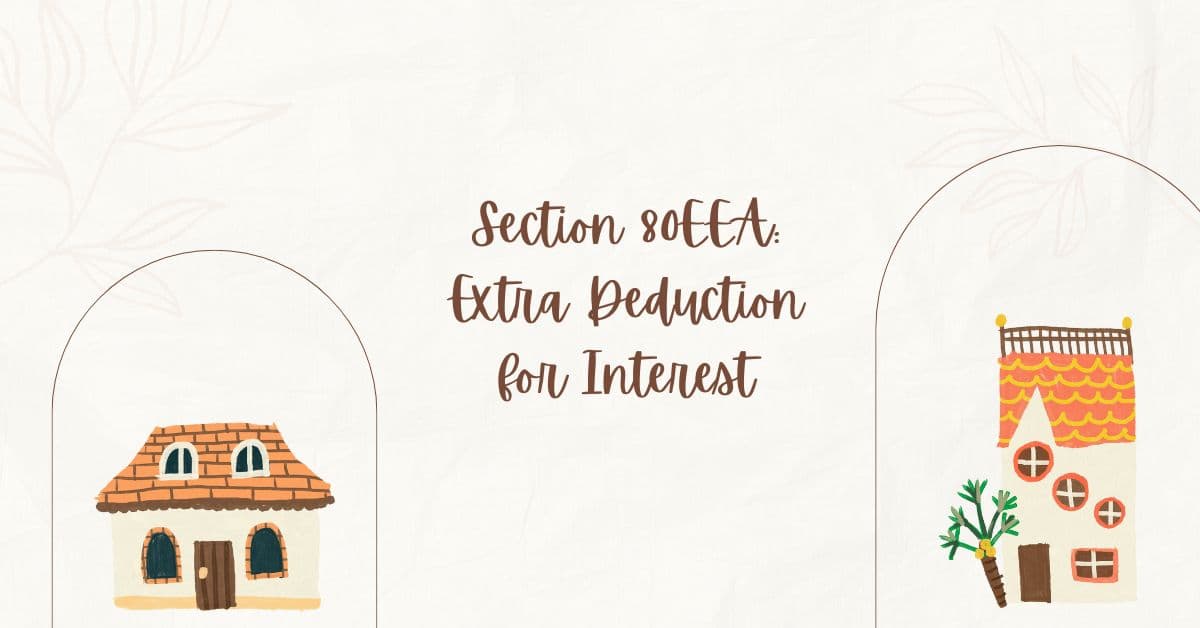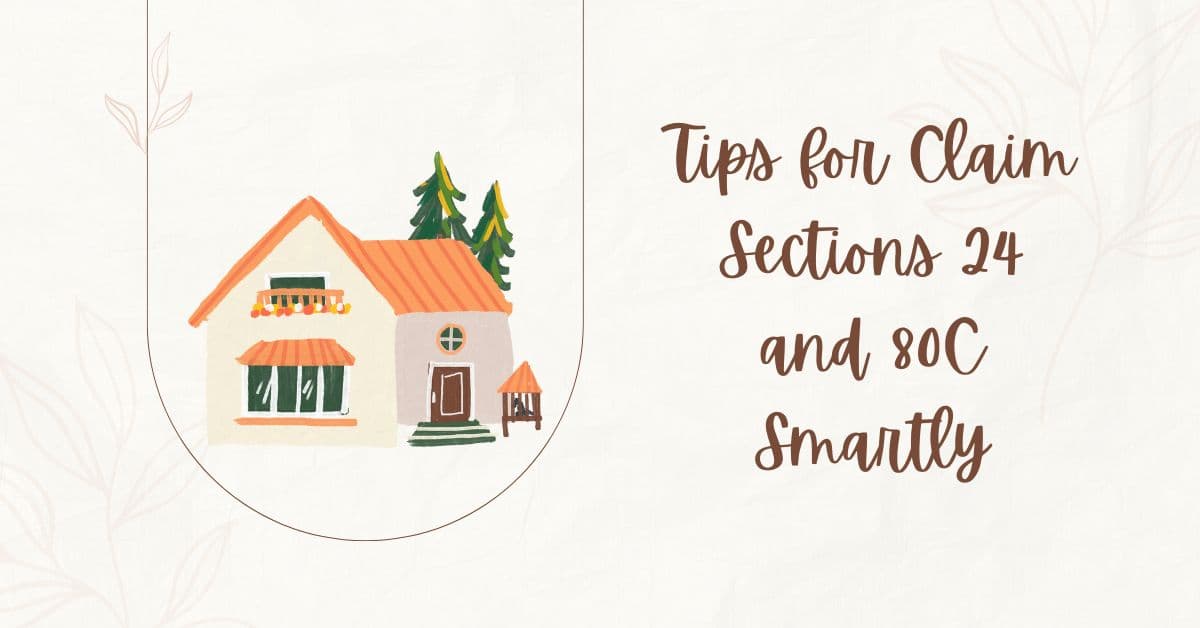Home Loan Tax Benefits in India – For many Indian families, owning a home is a dream come true, and a home loan makes it possible. In addition to realising this ambition, house loans provide substantial tax advantages that can lower your tax burden and lower the cost of homeownership. during house loan debtors under the Old Tax Regime, the Income Tax Act offers deductions under Sections 24 and 80C, as well as maybe Section 80EEA, during the fiscal year (FY) 2024–25 (assessment year 2025–26). The choice of regime is crucial since the New Tax Regime does not offer these advantages, which can save you up to ₹3.5 lakh a year. This comprehensive article, designed specifically for Indian taxpayers, contrasts the Old and New Tax Regimes, explains how to take these deductions wisely, and provides helpful advice for newcomers to optimise savings in 2025.
Understanding Home Loan Tax Benefits
By lowering your taxable income, home loan tax incentives in India are intended to lessen the financial strain of borrowing. In contrast to the simpler structure of the New Tax Regime, which has lower rates but no deductions, the Old Tax Regime offers the major deductions and permits a number of exemptions. The following are the main parts on house loan benefits:
Section 80C: Deduction for Principal Repayment

Up to ₹1.5 lakh can be deducted from the principal amount of your house loan each fiscal year under Section 80C. This deduction is included in the total ₹1.5 lakh limit, which also covers tuition, life insurance premiums, equity-linked savings plans (ELSS), and public provident fund (PPF) investments.
Important Points:
- Eligibility: Only resident persons and Hindu Undivided Families (HUFs) are eligible under the Old Tax Regime.
- Requirements: The deduction is only applicable once the building of the property is finished and you receive a completion certificate. To prevent the claimed deductions from being reversed, the property must be kept for a minimum of five years.
- Joint Loans: If two people are co-owners and the loan is in joint names, each co-borrower may claim up to ₹1.5 lakh, which essentially doubles the advantage for couples.
- Additional Expenses: In the year of payment, stamp duty and registration costs paid at the time of property acquisition are also eligible under Section 80C.
Section 24: Deduction of Interest
Depending on the kind of property, Section 24 permits a deduction for interest paid on your house loan.
Regarding Self-Occupied Real Estate:
- Limit: Deduct interest payments of up to ₹2 lakh annually.
- Pre-building Interest: Beginning in the year of completion, interest paid during the building phase may be recovered in five equal payments.
- Joint Loans: As long as they share ownership and loan payments, each co-owner is eligible to receive up to ₹2 lakh.
Regarding Let-Out Properties:
- No Upper Limit: Subtract all interest paid, no matter how much.
- Loss Set-Off: Interest and rental income losses from a home can be deducted from other sources of income up to ₹2 lakh per year, with any excess losses being carried forward for a period of eight years.
Section 80EEA: Extra Deduction for Interest
In addition to the ₹2 lakh deduction under Section 24, Section 80EEA allows first-time homeowners to deduct up to ₹1.5 lakh in interest. This is available for outstanding loans that fulfil these requirements in 2025 and pertains to loans approved between April 1, 2019, and March 31, 2022.

Eligibility:
- The property’s stamp duty value cannot be more than ₹45 lakh.
- On the day the loan is approved, the borrower cannot be the owner of another residential property.
- only accessible under the previous tax system.
The New and Old Tax Regimes
New Tax Regime vs Old – What Saves You More?
Introduced in 2020 and going into default in 2023, the New Tax Regime offers reduced tax rates but does away with the majority of deductions, including those under Sections 24, 80C, and 80EEA. For house loan debtors with substantial qualified costs, the Old Tax Regime is more advantageous since it permits these deductions while having higher rates.
FY 2024-25 Tax Slabs (AY 2025-26):
| Income Range(₹) | Old Regime(%) | New Regime(%) |
| Up to 2.5 lakh | 0 | – |
| Up to 3 lakh | – | 0 |
| 2.5-5 lakh | 5 | – |
| 3-6 lakh | – | 5 |
| 5-10 lakh | 20 | – |
| 6-9 lakh | – | 10 |
| 9-12 lakh | – | 15 |
| 10-15 lakh | 30 | – |
| 12-15 lakh | – | 20 |
| Above 15 lakh | 30 | 30 |
Additional notes:
- New Regime: Provides a ₹60,000 refund for incomes up to ₹12 lakh and a ₹75,000 standard deduction for salaried persons, meaning that up to ₹12.75 lakh is tax-free.
- Old Regime: For incomes up to ₹5 lakh, the Old Regime offers a ₹12,500 refund in addition to a ₹50,000 statutory deduction.
How to Select Different Regimes
To decide the more cost-effective regime:
Determine Deductions: Enumerate all allowable deductions, such as interest (Section 24), principal on a house loan (Section 80C), and other costs (such as health insurance, Section 80D).
Compute Your Taxable Income:
- Old Regime: Apply the tax slabs and subtract deductions from gross income.
- New regime: The new regime accounts for the ₹75,000 standard deduction (if salaried) and applies tax slabs on gross income.
Compare Tax Liability: After accounting for the 4% Health and Education Cess, select the tax regime with the lesser tax.
Due to deductions, the Old Regime is frequently more advantageous for house loan borrowers, particularly if interest payments surpass ₹2 lakh or if total deductions are substantial.
How to Get Tax Benefits for Home Loans
When submitting your Income Tax Return (ITR), you can claim these deductions:
Obtain an Interest Certificate: Ask your lender (like SBI or HDFC Bank) for one that lists the principal and interest paid for the fiscal year 2024–2025.
Select the Correct ITR Form: Use ITR-2 for other sources of income, such as capital gains, or ITR-1 for salaried persons earning up to ₹50 lakh.
Enter the following information:
- In the ITR’s deduction section, report principal repayment in accordance with Section 80C.
- Under Section 24, record interest as a loss under “Income from House Property.”
- If you qualify, include the extra interest deduction for Section 80EEA.
File ITR online: Use systems such as [ClearTax] or the [Income Tax e-filing portal] to file your ITR online by September 15, 2025.
E-Verify: For quicker processing, confirm your return using a Digital Signature Certificate (DSC), net banking, or an Aadhaar OTP.
Maintain Records: Save the loan contract, interest certificate, and real estate records in case they are audited.
Tips for Claim Sections 24 and 80C Smartly
In order to optimise your tax savings:

- Choose Joint Loans: If you and your spouse are both taxpayers, you may save up to ₹7 lakh by taking out a joint loan, which enables each of you to claim up to ₹1.5 lakh (Section 80C) and ₹2 lakh (Section 24).
- Time Repayments: Balance principle repayments with other investments, such as PPF or ELSS, while keeping them under the ₹1.5 lakh Section 80C limit.
- Select the Type of Property Strategically: claim limitless interest deductions for rental properties that are rented out, but make sure to account for taxable rental revenue. The ₹2 lakh restriction is applicable to residences that are self-occupied.
- Prepay Sensibly: If you have extra money, you might want to pay off the loan early to save interest. However, contrast this with possible investment returns (e.g., mutual funds at 12%).
- Verify Your Section 80EEA Eligibility: You can claim the extra ₹1.5 lakh interest deduction if your loan was approved between April 1, 2019, and March 31, 2022.
- Keep Up: Keep an eye out for any announcements on adjustments to tax benefits in Budget 2025, since they might have an impact on FY 2025–2026.
Examples from Real Life
Example 1: Self-occupied property owned by a salaried individual
In FY 2024–2025, Saniya, a 30-year-old professional who makes ₹10 lakh a year, has a house loan that requires payments of ₹1 lakh principal and ₹2.5 lakh interest. Her other Section 80C assets total ₹50,000.
The Old Regime
- Deductions: ₹1.5 lakh (principal of ₹1 lakh plus ₹50,000 other) + ₹2 lakh (interest from Section 24) = ₹3.5 lakh.
- Income subject to taxation: ₹10 lakh minus ₹3.5 lakh minus ₹50,000 (standard deduction) equals ₹6 lakh.
- Tax: ₹32,500 + 4% cess = ₹33,800 = ₹12,500 (5% on ₹2.5–5 lakh) + ₹20,000 (20% on ₹5–6 lakh).
The new regime
- ₹10 lakh less ₹75,000 (standard deduction) equals ₹9.25 lakh, which is the taxable income.
- Tax: ₹48,750 + 4% cess = ₹50,700 = ₹15,000 (5% on ₹3–6 lakh) + ₹30,000 (10% on ₹6–9 lakh) + ₹3,750 (15% on ₹9–9.25 lakh).
Conclusion: ₹16,900 is saved under the Old Regime.
Example 2: Self-Occupied Property, Joint Loan
Situation: Married couple Arjun and Neha jointly own a home and have a joint debt for it. In addition to ₹50,000 in other Section 80C investments, each pays ₹75,000 in principle and ₹1.5 lakh in interest each year.
Old Regime (individually):
- Section 80C (₹75,000 primary + ₹50,000 other) + Section 24 (₹1.5 lakh) = ₹2.75 lakh are the deductions.
- For a couple, the total deductions are ₹2.75 lakh × 2 = ₹5.5 lakh.
- Tax Savings: If each person makes ₹10 lakh, their taxes are greatly lowered, saving them a total of ₹1.2 lakh.
New Regime: Higher tax liability and no deductions.
Conclusion: Joint borrowers save the most money under the Old Regime.
Frequently Asked Questions (FAQs)
Can I take advantage of the New Tax Regime’s home loan tax benefits?
No, only under the Old Tax Regime are deductions permitted under Sections 24, 80C, and 80EEA.
What is Section 24’s maximum deduction?
For self-occupied homes, the maximum is ₹2 lakh; for rental properties, there is no cap, and losses are deducted up to ₹2 lakh per year.
Can a combined loan allow deductions for both spouses?
Indeed, if co-owners and co-borrowers, each may claim up to ₹1.5 lakh (under Section 80C) and ₹2 lakh (under Section 24).
In 2025, will Section 80EEA still be accessible?
Yes, for loans with a maximum property value of ₹45 lakh that were approved between April 1, 2019, and March 31, 2022.
What paperwork is required in order to make these deductions?
A loan agreement, property records, and an interest certificate from your lender.
Conclusion
For Indian taxpayers in FY 2024–2025, home loan tax incentives under Sections 24, 80C, and maybe 80EEA provide substantial savings; nevertheless, they need selecting the Old Tax Regime. You can lower your tax burden by up to ₹3.5 lakh by deducting up to ₹1.5 lakh for principle repayment and ₹2 lakh for interest (plus ₹1.5 lakh under 80EEA if qualified). To properly submit your ITR by September 15, 2025, use programs like [ClearTax] or [Tax2win]. For complicated situations, get advice from a tax expert. To take use of these perks wisely and improve your financial situation, start making plans right away!
Disclaimer: Tax advantages are dependent on individual circumstances. Before submitting your ITR, speak with a knowledgeable tax professional.
File ITR Online for Beginners – A Quick Guide
How to Use Amex Platinum Credit Card for Smart Tax Planning in 2025
Sensex Nifty Stock Market: Last-Minute Tax Moves!

